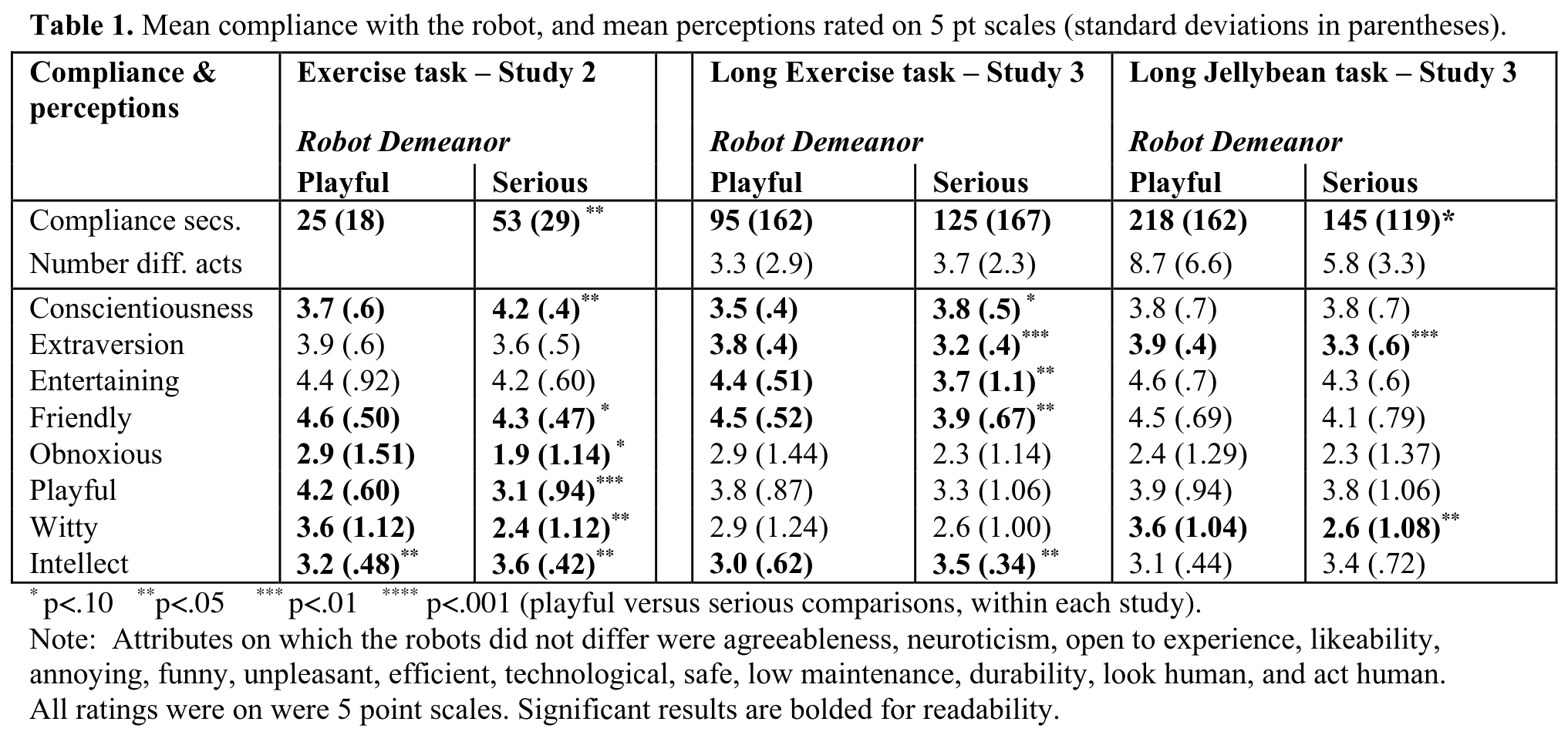Goetz, J., & Kiesler, S., & Powers, A., (2003). Matching Robot Appearance and Behavior to Tasks to Improve Human-Robot Cooperation.
Introduction
People respond positively to attractive and extraverted people and to a happy, enthusiastic approach. This suggests a positivity hypothesis - the more attractive a robot looks and the more extraverted and cheerful its behavior is, the more people will accept and comply with the robot.
In contrast is the matching hypothesis - that the appearance and social behavior of a robot should match the seriousness of the task and situation.
Study 1: Preference for humanlike robots in jobs
The matching hypothesis also suggests that a more humanlike appearance is better for jobs that are more social in nature.
Method
They created 12 2D robotic heads with three levels of humanlikeness (human, midstage, machine). They also varied the age of these robots, but did not formulate hypotheses for these differences. They also created feminine and masculine heads, but these were kept constant for each participant: half of the participants only judged feminine robots and half judged only masculine robots.
In an online survey the participants made a series of choices between two of the robots at a time. They were asked which robot would be suitable for service robot jobs. Only the results for the main effect of style (humenlikeness vs. machinelikeness) and the hypothesized interaction of style and String category are reported here.
Results
For the female robot both the main effect of style and the interaction of style and Strong category were significant. Participants preferred the humanlike robots for most jobs: actress and drawing instructor (Artistic), retail clerk and sales representative (Enterprise), office clerk and hospital message and food carrier (Conventional), aerobics instructor and museum tour guide (Social).
Participants preferred machinelike robots for jobs including: lab assistant and customs inspector (Investigate) and for soldier and security guard (Realistic).
For the masculine looking robots were less strong patterns, but were generally in the same direction.
These results support the matching hypothesis.
Study 2: Compliance with a playful or serious robot
They wanted to test whether a service robot's social demeanor would change people's compliance with the robot's request.
The positivity hypothesis predicts that a cheerful, playful robot will elicit more compliance, while the matching hypothesis predicts that a cheerful, playful robot will elicit more compliance if the task context is related to entertainment or fun, but a more serious or authoritative robot will elicit more compliance if the task context is more serious, urgent or disagreeable.
Method
Because physical exercise is a task that is good for people, but most fail to do regularly, they prototyped a robot's social behavior to create two types of demeanor (playful vs. serious). The robot asked participants to perform some exercise routines.
The demeanor was manipulated through the robot's speech.
Afterwards the participants were asked to fill in a questionnaire.
Results
Participants exercised longer when the robot was serious than when the robot was playful, supporting the matching hypothesis (53 vs. 25 seconds).
The results of the questionnaire indicated that participants rated the serious robot significantly higher than the playful robot before they were asked to do the exercise on their own. They also rated it smarter, but less playful and less witty than the playful robot. The playful robot was also rated as slightly more obnoxious.
Study 3: Compliance with a playful or serious robot on an entertaining vs. serious task
In this study the matching hypothesis was tested by comparing compliance with a robot on two tasks: the exercise task and a jellybean recipe task. Participants were asked to taste different flavors of high-quality jellybeans and to create "recipes".
They predicted participants would comply more with the playful robot in the jellybean task and more with the serious robot in the exercise task.
Method
The procedure was generally the same as in the second study. In the jellybean condition, participants were asked to guess the flavors of differently colored and flavored jellybeans. Then they were asked to complete the first questionnaire.
In Phase 2, the robot asked participants to make up combinations of jellybean flavors.
Results
As predicted, the playful robot elicited more compliance than the serious robot did in the jellybean condition, but the serious robot elicited more compliance than the playful robot did in the exercise condition.

